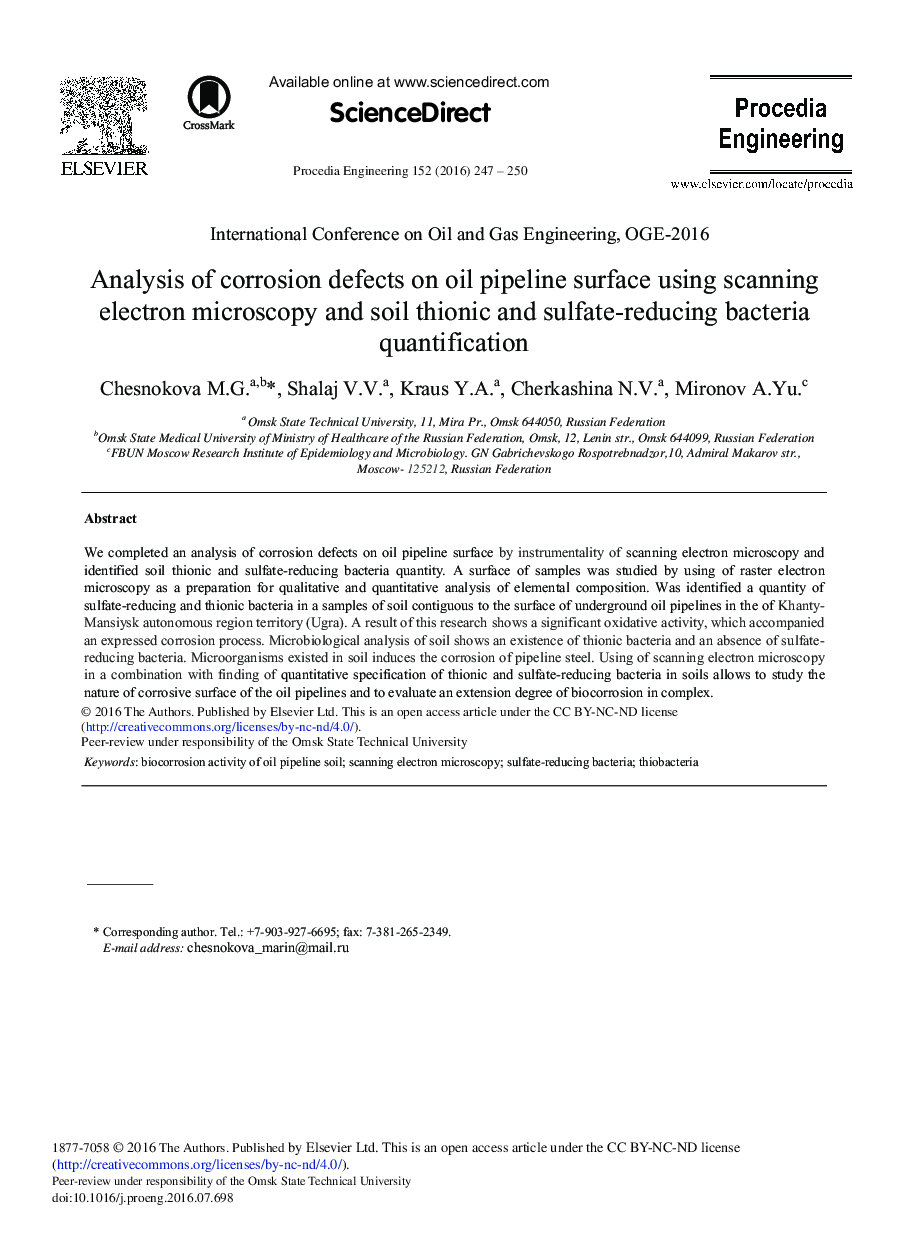| Article ID | Journal | Published Year | Pages | File Type |
|---|---|---|---|---|
| 852948 | Procedia Engineering | 2016 | 4 Pages |
We completed an analysis of corrosion defects on oil pipeline surface by instrumentality of scanning electron microscopy and identified soil thionic and sulfate-reducing bacteria quantity. A surface of samples was studied by using of raster electron microscopy as a preparation for qualitative and quantitative analysis of elemental composition. Was identified a quantity of sulfate-reducing and thionic bacteria in a samples of soil contiguous to the surface of underground oil pipelines in the of Khanty- Mansiysk autonomous region territory (Ugra). A result of this research shows a significant oxidative activity, which accompanied an expressed corrosion process. Microbiological analysis of soil shows an existence of thionic bacteria and an absence of sulfate- reducing bacteria. Microorganisms existed in soil induces the corrosion of pipeline steel. Using of scanning electron microscopy in a combination with finding of quantitative specification of thionic and sulfate-reducing bacteria in soils allows to study the nature of corrosive surface of the oil pipelines and to evaluate an extension degree of biocorrosion in complex.
